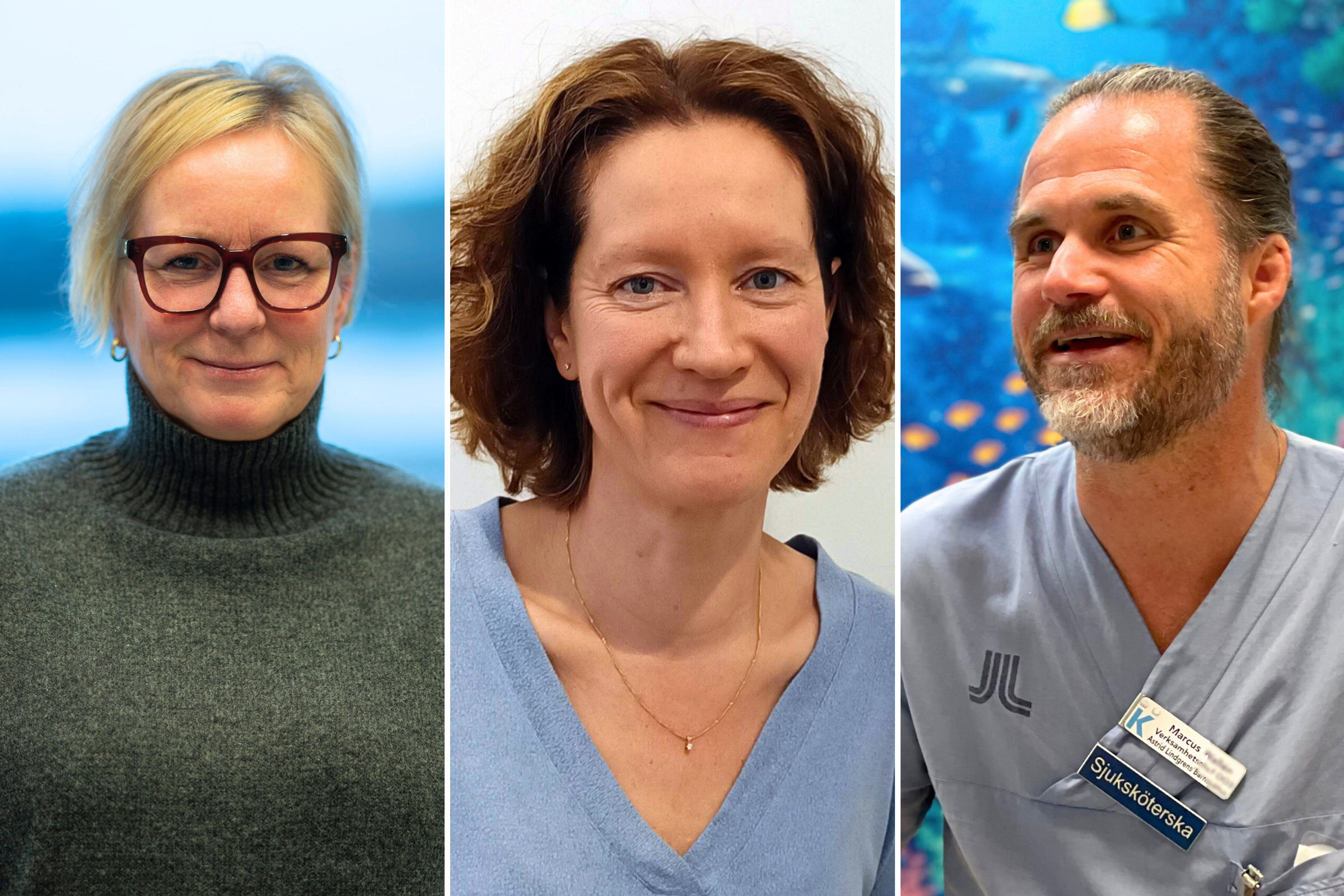Karolinska is adapting to take care of more patients despite a strained economy

The challenging economic situation places stringent demands on the hospital to continue delivering according to its production mission. Costs need to be reduced, and resources used responsibly. Meanwhile, several departments have already adopted new work methods to ensure that all patients receive the assistance they need.
– The tough situation has several underlying factors: a notice of layoffs, an uncertain economic environment in our surroundings and within Karolinska, as well as a challenge in how we should meet the future of healthcare, including an aging population. We are continuously working with these perspectives, says Katarina Meijers, Director of Nursing within the theme of Acute and Reparative Medicine.
Collaboration is key
This involves, among other things, developing new procedures, innovative solutions, new skills, and providing training for various professional groups, Katarina emphasizes. As well as discontinuing activities that do not add value for the patient.
– A good example is when the orthopedic, surgical, and trauma reception stopped performing a portion of the admission process since it was already being done in another part of the healthcare chain. The outcome was that they could assist more patients, says Katarina Meijers .
She emphasizes the benefits of working collaboratively across the nursing domain to address the challenges that arise.
– We view the patient from multiple perspectives and learn from each other. This helps us work more consistently and establish a fairer organization. We also collaborate with other units that share our care floors, such as the pediatric emergency department during peak times, and internally with the acute care departments to manage variations in the flow, says Katarina Meijers.
Numerous minor changes
Josefine Kaunisto, Director of Care Unit for the Cardiovascular Nursing Division within the Heart and Vascular Center, also emphasizes the opportunities that the transition can bring. Her unit began implementing new work methods as early as last autumn.
– We began with a joint future assessment where we looked at the trends, needs, opportunities, and challenges we saw in the external environment and healthcare in general, she says.
On a practical level, this has, among other things, led to a thorough examination of patient transportations.
– Within cardiology and vascular care, patients are frequently transported between various interventions and examinations, such as radiology, post-op, and angiography. Many of these transports are supervised, meaning the patient is connected, and a nurse accompanies them. Our review indicates that patients can be transported by transport personnel to a much greater extent, freeing up the nurse's time for direct patient care on the unit. Through numerous minor changes, we can adjust staffing so that we can fulfill our mission without running faster, says Josefine Kaunisto.
Everyone's concern
In thoracic surgery, many different units have successfully come together to explore how everyone can contribute to meeting the healthcare mission. This applies to both patients currently in the hospital and those awaiting heart surgery.
– We have, for instance, rotated nurses from day care to inpatient care. We also have shared objectives, with one example being to eliminate the need for temporary staff in thoracic services. It is the responsibility and concern of everyone within the nursing domain to make this a success, says Josefine Kaunisto.
Several daily brief meetings yield results
For Marcus Öhlander, Director of Highly Specialized Pediatric Orthopedics and Pediatric Medicine, the key to change is spelled as collaboration.
– In the Pediatric Theme, representatives from our various units meet briefly twice a day. The purpose is to ensure that we can efficiently care for both our acute and planned patients, he says, and adds:
– Sometimes the situation is challenging, but through strong collaboration across boundaries, we support each other in caring for the children who need our help.
________________________________
Text: Nneka Magnusson Amu